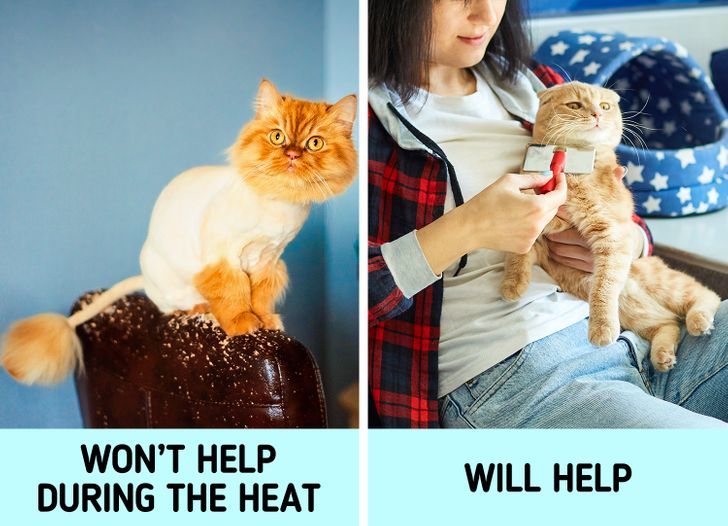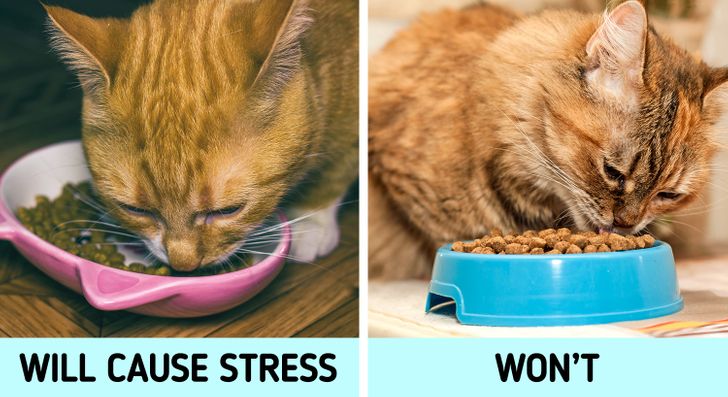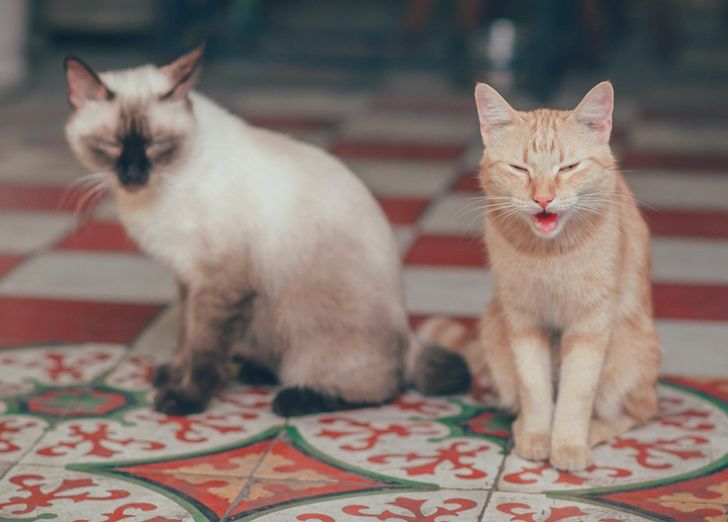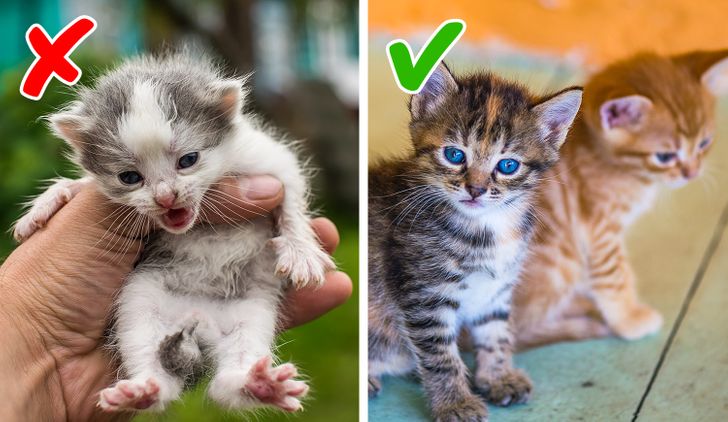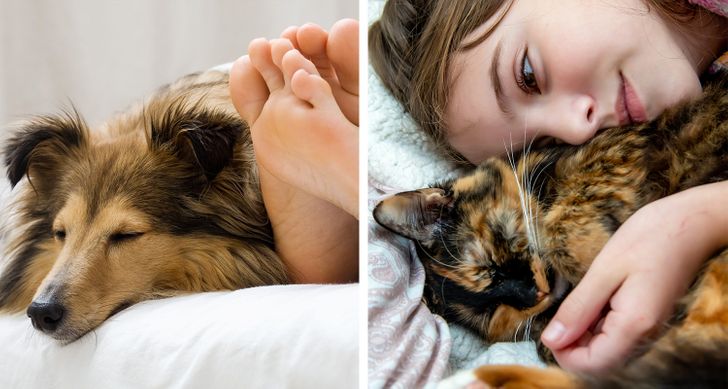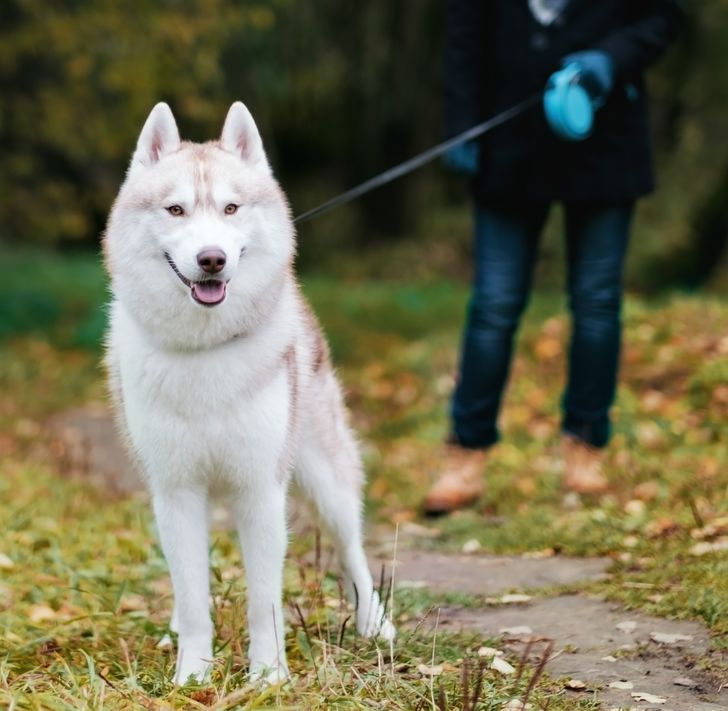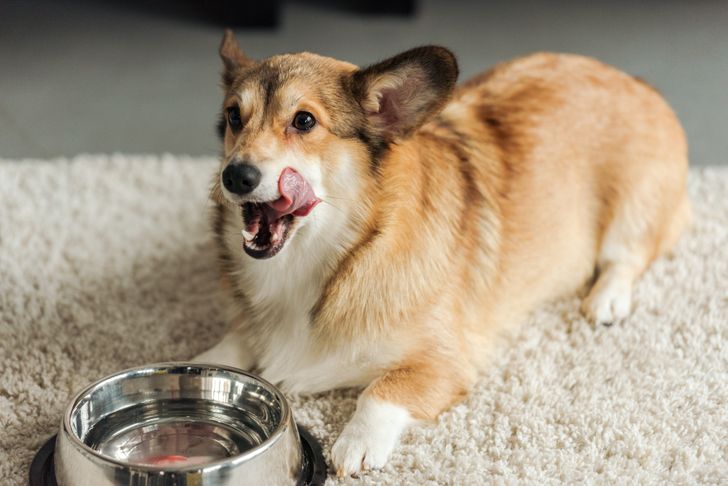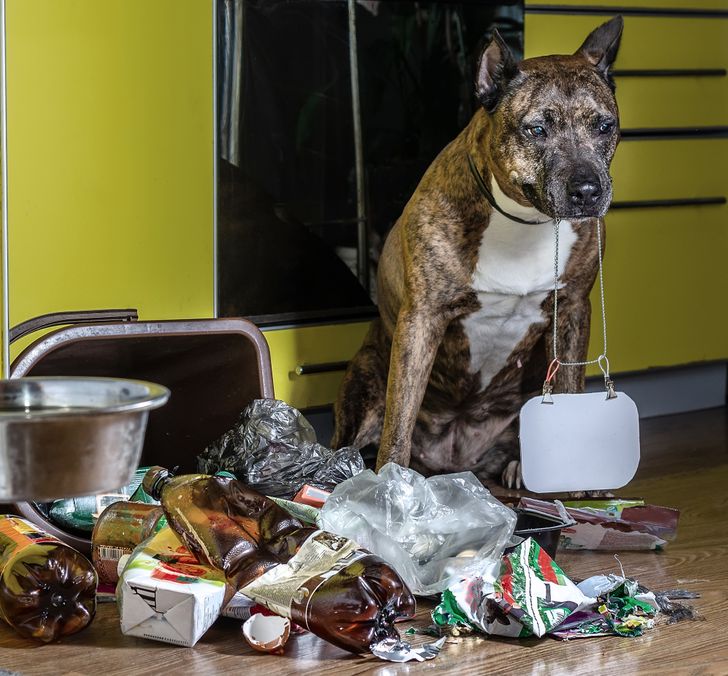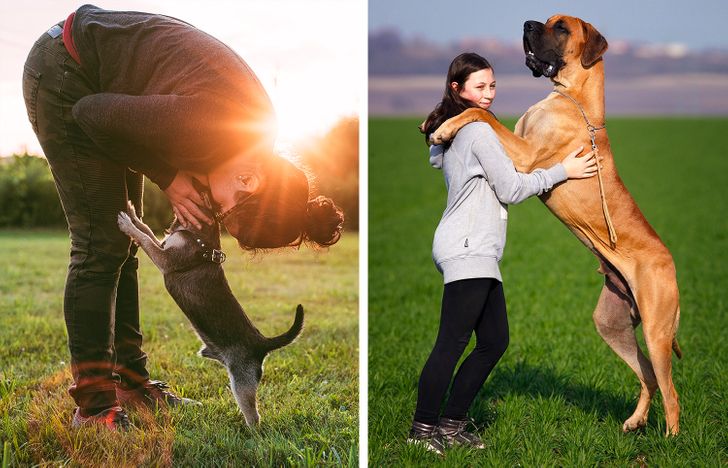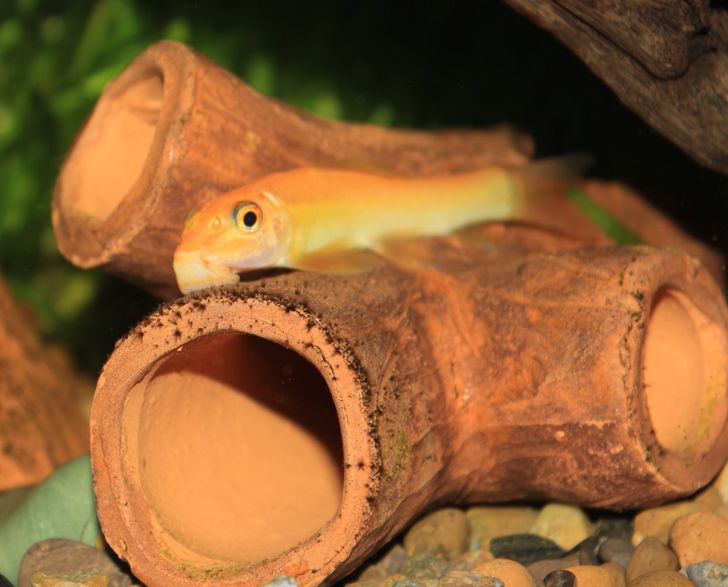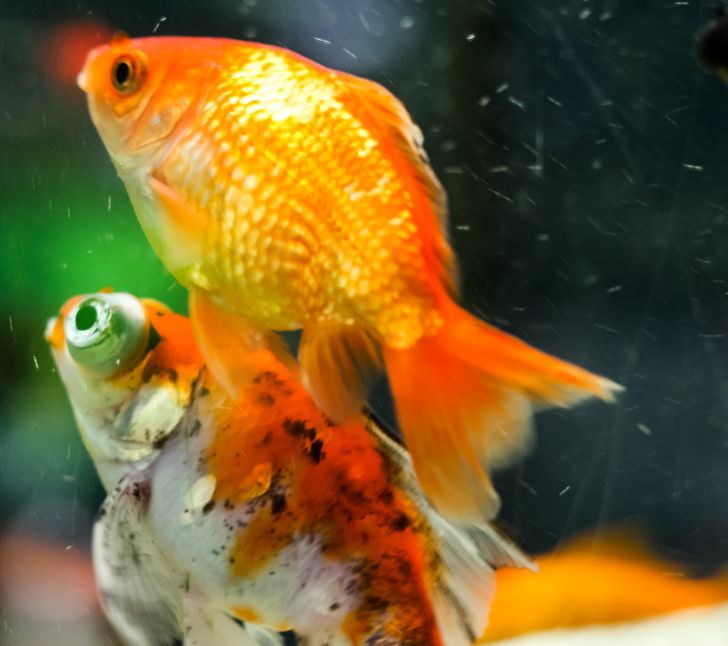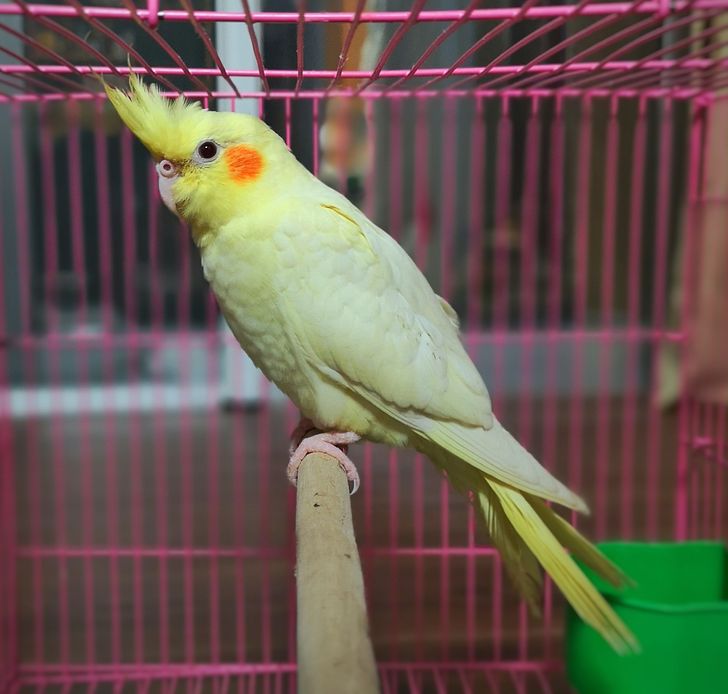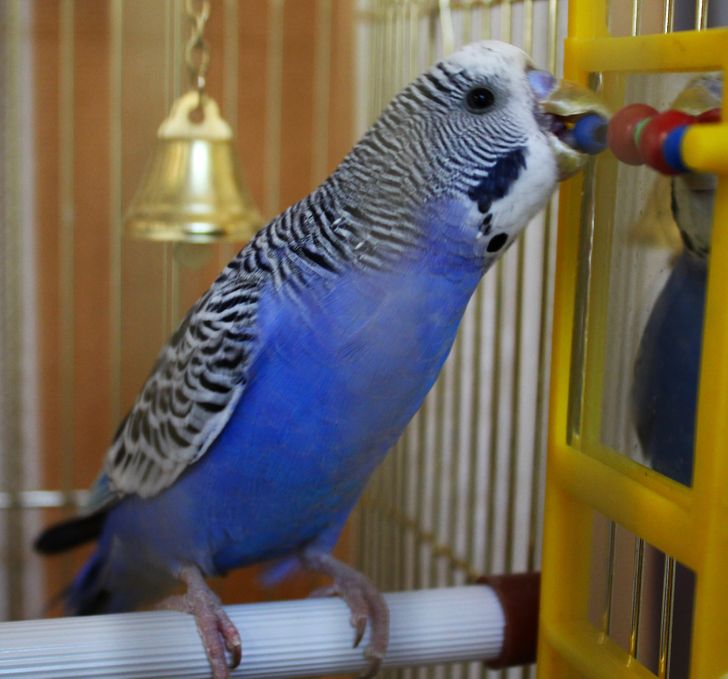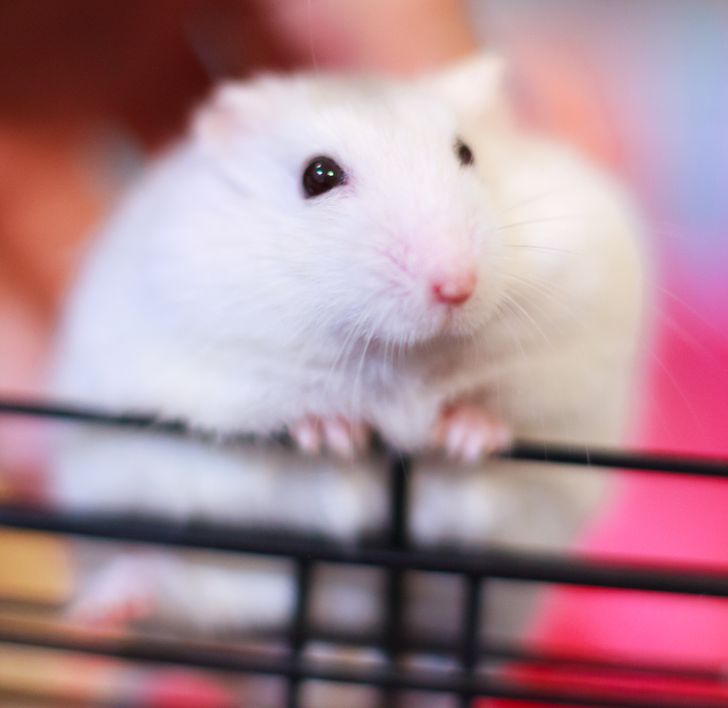looks like the cat is having fun
14 Typical Mistakes That Many Pet Owners Make
We love our pets to the moon and back but still, oftentimes, we don’t consider the basics of how to take care of them. We indeed want to make everything for the better but instead, we end up creating new issues for our little fluffy friends. As a result, the pet’s health might get worse and their behavior might become unbearable.
We, at the Bright Side editorial, love animals. That’s why we have picked out the most common mistakes that their loving owners make.
1. We shave their fur off in the heat and at other times.
It doesn’t matter whether your pet lives indoors or sometimes goes outside — shaving an animal is not a good idea either way, even if the thermometer has risen to a high mark. Sweat glands in animals are located in the pads of the paws and it’s through these that the body is cooled. Fur protects the skin of the animal from the harmful effects of the sun, insect bites, and keeps it cool — therefore, in no case should you remove the fur or shave it off.
There are quite a few medical reasons for shaving an animal, like for example, when your pet is going to have surgery or if they are suffering from some skin disease. In order to help your fluffy friend live through the heat, create a dark cool shelter for them but make sure it is well-ventilated. Also, comb the long-haired cats every day so that their extra fur gets removed.
2. We buy a bowl that is the wrong shape.
If the cat food bowl is too small, your furry companion’s whiskers will regularly touch the sides of the bowl. This sensitive organ should not be stimulated too often because it can provoke whisker fatigue. It can lead to the cat’s stress, excitement, and changes in eating behavior, including a decrease in appetite and aggression.
Make sure to pay attention to the depth of the bowl as well. If it turns out to be too deep, the pet will start ignoring the food left at the bottom. Eventually, the animal will be hungry, while food leftovers will spoil constantly.
3. We choose a pet based on their color.
When choosing a pet, we pay a lot of attention to its color. That’s important, indeed. Some people even associate an animal’s color with certain features of the pet and believe, for example, that orange cats are more friendly, while black and white cats are believed to be less communicative. Still, temperament plays a significant part too.
Before adopting an animal, read about the chosen breed, and watch how they behave in the animal shelter. Compare the animal’s character with your own. Perhaps, some breeds will seem too communicative to you and you will quickly get tired of the cat’s or dog’s active lifestyle.
4. We adopt kittens and puppies that are too small.
It’s hard to resist the charm of fluffy kittens but still, adopting newly born puppies and kitties is not a good idea. In infancy, they require special care and careful observation. A new owner can face problems that they wouldn’t be able to solve without the help of a specialist.
The best age for transferring a pet into a new home is 12-13 weeks. Before that, the newborns need to be under their mother’s supervision — she will be feeding them and teaching them the main skills of independent life. The health of pets who grow up in a close-knit “nest” will be much stronger. Moreover, they will be more sociable when you get them.
5. We let our pets sleep on our beds.
Falling asleep with your fluffy pet is so pleasant! However, this can be harmful to both the pet and the human. We and our 4-legged friends have different regimens and their early wakeup can break the rhythms of our sleep. As a result, we will not get enough sleep and will feel tired.
Sleeping with pets can cause asthma and allergies. In addition, cats carry tiny particles of kitty litter on their paws, which can contain bacteria.
Also, a cat or a dog needs their own bed for a comfortable and proper rest, where they will have the opportunity to isolate themselves and restore their energy.
6. We don’t check their fur for ticks after walking in the woods.
We are used to examining our clothes and bodies when returning from a walk in the woods. If a 4-legged friend was accompanying you, make sure to check their fur too. Dogs often run through tall grass or bushes and it’s very easy for them to pick up unpleasant insects.
Detecting the parasite on time will keep your pet healthy and reduce the risk of Lyme disease and other ailments. Once you find the tick, go to your veterinarian as soon as possible.
7. We don’t think about the water our pets drink.
The debates about what water to give to pets are still on the go. Some people buy bottled water, others fill cat or dog bowls with tap water. However, a lot depends on the region in this situation that’s why it’s recommended to give pets the same water that we drink ourselves.
If the tap water in your area is clean enough and you can easily drink it, you can give it to your pet too. If the water has to be filtered, don’t let them drink the tap water. It may contain harmful impurities that are hazardous to their health.
8. We let our pets dig in the garbage bin.
Sometimes dogs, as well as cats, love to dive into the trash in search of the remains of tasty food. It is better to suppress these attempts because the digestive system of pets is no less delicate than that of a human. Just like in humans, stale foods can cause stomach pains, nausea, and food poisoning.
There are several ways you can stop your animal from digging in the trash. Buy a garbage bin with a tightly closing lid so that your pet can’t open it. Give your pet toys every time you leave home so that your 4-legged friend doesn’t feel bored. And, of course, make sure your pet is not hungry — in this case, the animal won’t feel the temptation to dive into the garbage bin.
9. We let our dogs put their paws on us.
A puppy that stands on its hind legs looks cute indeed. But the older the pet gets, the more problems arise — the dog starts to jump on other people in search of attention. In the worst case scenarios, the animal can even unintentionally knock them off their feet.
The easiest solution is to not cheer on this behavior from an early age. Oftentimes, after placing their paws on their owner, a dog gets a treat. This forms a reflex, which means the doggie will keep doing it to get something tasty.
10. We let little fish swim in the aquarium too early.
Whenever we get a new aquarium we have this instant wish to fill it with water, marine decor, and beautiful inhabitants as soon as possible. However, there is no need to rush — the aquarium should be in quarantine for the first few days. It is necessary that a special biological environment suitable for the life of the fish is able to form.
Fill the aquarium with water that has previously passed through a special filter and install the plants and shelters for future residents.
You also shouldn’t place all the fish into the aquarium at once because, after a short time, there will be too many waste products in the water, which will have a detrimental effect on the fish.
11. We overfeed aquarium fish.
Feeding is one of few ways to show your affection if your pet lives in an aquarium. That’s why many owners of marine inhabitants give them plenty of food. This can lead to stress, obesity, and the worsening of the water quality — uneaten food will start to decompose and release toxins.
12. We set up only one perch in a birdcage.
Oftentimes, birdcages have only one perch. That’s why our feathery friends can end up getting pododermatitis (a disease on the skin of the hind limbs) or bumblefoot — damage to the feet. Birds need 3-4 different perches for a healthy and comfortable life. It’s better if they are not made of plastic and have an uneven surface. This will keep the birds from stagnating blood in their limbs. It is important that the diameter of the perch matches the grip of the feet.
13. We provide birds with too few toys.
It may seem, to an inexperienced person, that a couple of toys are just right for a bird. But these birds need several types of things to play with: for their claws, for their beak, hanging rings, ladders, and much more. It is important that the bird can perform several actions like swinging, tossing, and holding the toy in its claw. Items for entertainment need to be changed periodically, otherwise, the bird may get bored.
14. We select the wrong hamster bedding.
What the floor of the cage is covered with is no less important than the diet of a small rodent. The use of newspapers is not recommended because printing ink is toxic. You should also stay away from wood chip bedding because if the wood hasn’t dried properly, volatile oils can irritate their respiratory tract.
As for the cotton fiber — the hamster can mix them up with food and put them in their mouth, which might cause suffocation. Straw bedding, in its turn, can prick the animal. The best option is — special soft fillers for cages. They don’t cause allergies or injuries to your pet. Change this bedding once every couple of weeks.
What pets do you have? Where is their favorite place at home?
Subscribe to our podcast on Spotify or Apple podcasts to enjoy our best stories and give a real treat to your ears.
Comments
Related Reads
How 15 Same-Age Pairs of Celebs Looked on Red Carpets in the 2000s vs Now

Miley Cyrus Raises Eyebrows as She Wears a Naked Dress Made Only of Safety Pins at the 2024 Grammys

A Homeless Woman Receives a Full Makeover and Impresses the Whole World

Meg Ryan, 62, Is Praised for Finally Looking Her Age As She Stuns in Her Latest Appearance

A Girl Fakes Losing Her Passport to Avoid Babysitting Her Nephews, and Asks Public If She Did the Right Thing

A Girl Born Without Nose, Who Was Called “Voldemort”, Proved Everyone Is Beautiful in Their Own Way

“She Needs to Leave Her Face Alone,” Lady Gaga’s Latest Appearance Sparks Controversy

I Was So Ugly Until I Spent $30K to Get a New Face

Young Woman Documents Her Double Jaw Surgery, and Leaves Everyone Stunned With the Results

I Want to Divorce My Husband Because He Shaved My Head

A Little Girl Was Called a ’Monster’ Because of Her Birthmark, Until Her Mom Brought Back Her Sweet Smile

Miley Cyrus Causes a Stir by “Leaving Nothing to the Imagination” as She Wears an Extremely Revealing Dress

